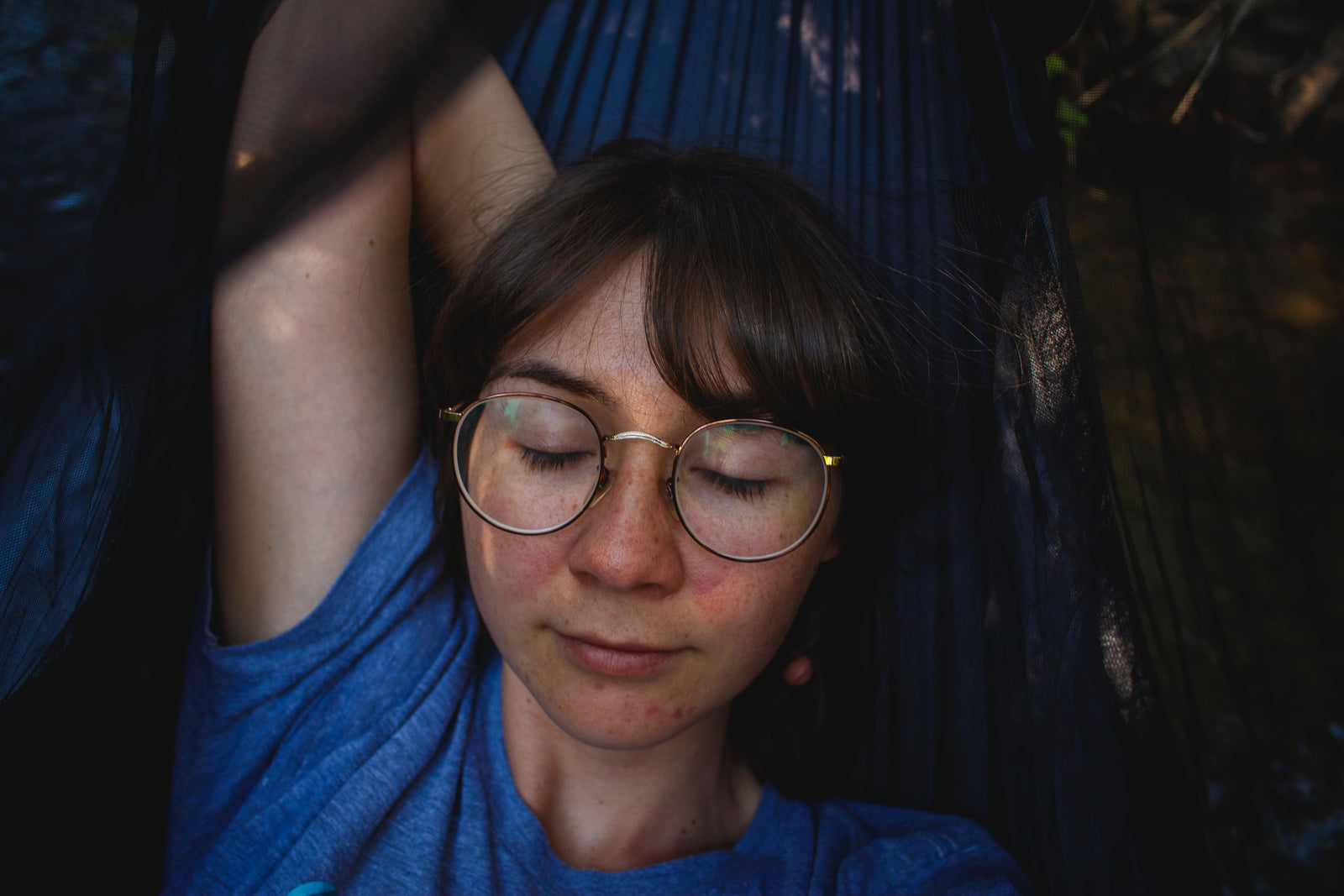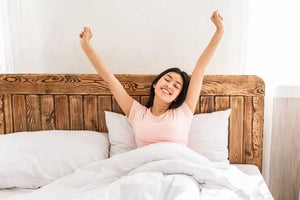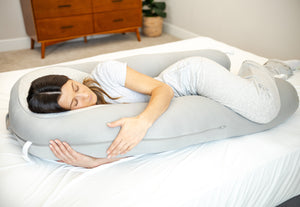Are you someone who loves taking naps during the day? While napping can have many benefits for your health and well-being, is napping too much bad for you? The truth is, there is a fine line between taking a healthy nap and indulging in excessive napping.
In this blog post, we will explore the reasons why you should be careful about napping too much, how much napping is too much, the pros and cons of napping, and tips for making the most of naps while keeping the habit healthy. From the best nap accessories to the best way to nap and feel rested, we'll cover it all.
Is Napping Too Much Bad for You?
Napping can be a great way to boost your energy and productivity during the day. However, is napping too much bad for you? The answer is yes, it can be. Taking too many naps or napping for too long can negatively impact many facets of your life.
There is an optimal balance that we'll discuss further down.
Why You Should Be Careful About Napping Too Much
Napping can be a great way to boost your energy and productivity during the day, however, excessive napping can have negative effects on your overall health and well-being as we will demonstrate below.
Insomnia & Other Sleep Disorders
Taking too many naps or napping for too long can negatively impact your sleep schedule and lead to insomnia or other sleep disorders. This can make it difficult for you to fall asleep at night, and lead to daytime fatigue and drowsiness.
Grogginess & Disorientation
Napping too much is bad for you because it can cause feelings of grogginess and disorientation upon waking, which can be detrimental to your daily functioning, including your cognitive abilities, reaction time, and productivity.
Decreased Productivity
Moreover, napping in the office can also cause some problems for your colleagues and your work. It can be seen as a sign of laziness or inefficiency, and it's not always possible to find a quiet and comfortable place to nap in the office. This can lead to decreased productivity and negatively impact your work performance and relationships with colleagues.
Lack of Physical Activity
Napping too much can also lead to a lack of physical activity. If you're spending too much time napping, you may not have enough time to engage in regular physical activity or exercise, which can have negative effects on your overall health and fitness.
Regular exercise can help to improve your cardiovascular health, increase muscle strength and flexibility, and boost your energy levels.
Psychological Problems
Furthermore, excessive napping can lead to psychological problems. If you nap too much during the day, you may find that you have less time to pursue your hobbies, interests, and other activities.
This can lead to feelings of boredom and dissatisfaction and negatively impact your overall mental well-being.
How Much Napping is Too Much?
Determining how much napping is too much can be a tricky task, as it can vary depending on the individual and their specific needs. However, there are some general guidelines that can help you determine whether your napping habits are healthy or excessive.
A good rule of thumb is to limit your naps to 20-30 minutes, known as a "power nap." This type of nap can help to boost energy, reduce stress, improve mood, and cognitive function. A power nap should be taken earlier in the day, around 2 pm, as it can help to combat the natural lull in energy that many people experience in the afternoon.
Napping for more than 30 minutes can lead to entering deeper stages of sleep, which can make it harder to wake up, and leave you feeling groggy and disoriented upon waking. This can make it difficult to return to your normal activities, and decrease your cognitive abilities, reaction time, and productivity.
Additionally, if you find that you're napping multiple times throughout the day, or that your naps are interfering with your nighttime sleep, it's likely that you're napping too much.
Another important aspect to consider is the amount of time you spend awake before and after your nap. The best time to nap is after lunch and before dinner so that you are not too close to your bedtime.
It's also important to consider how your napping habits are impacting your overall health and well-being. If you're feeling fatigued, experiencing insomnia or other sleep disorders, or if your napping habits are negatively impacting your physical health, it may be time to reassess your napping habits.
Tips for Making the Most of Naps While Keeping the Habit Healthy
Napping can be a great way to boost your energy and productivity during the day, but it's important to make sure that your napping habits are healthy since, as we now know, napping too much is bad for you in a lot of unexpected ways. But there are a lot of people out there having trouble napping during day.
Here are some tips for making the most of your naps while keeping the habit healthy:
Optimize Your Environment for Napping
Your environment can greatly impact the quality of your nap. In order to optimize your environment for napping, you should consider the following factors:
- Temperature: The temperature of your room should be comfortable, ideally between 60-67°F. Being too warm or too cold can make it difficult to fall asleep.
- Light and noise: Try to reduce or eliminate noise and light as much as possible. This can be achieved by using earplugs and an eye mask, or by closing curtains or blinds to block out light.
- Comfort: Invest in a comfortable mattress and pillows, and use comfortable and breathable sheets. A comfortable and supportive surface can help you fall asleep faster and stay asleep longer.
Set an Alarm
Setting an alarm can help you ensure that you don't nap for too long. As previously discussed, napping for more than 30 minutes can lead to feelings of grogginess and disorientation upon waking. To avoid this, set an alarm for 30 minutes or less to make sure you don't oversleep.
Nap at the Right Time
The timing of your nap can play a significant role in how rested and refreshed you feel upon waking. To get the most out of your nap, it's best to schedule it for earlier in the day, ideally around 2 PM.
As we mentioned earlier, this is because many people experience a natural dip in energy levels during the afternoon, and taking a nap at this time can help to combat that. Additionally, napping earlier in the day can help to ensure that your nap doesn't interfere with your nighttime sleep, which can lead to insomnia or other sleep disorders.
Consider Nap Accessories Like the Plufl
If you're looking for a more comfortable and supportive surface to nap on, the Plufl could be a perfect option for you.
This human size dog bed offers a unique design that mimics the sensation of laying on a cloud, providing a soothing and relaxing experience while you sleep. The Plufl is made with high-quality materials that include a safe and non-toxic Certi-Pur foam, adjustable all-natural pillow bolsters, and an Oeko-Tex vegan fur cover that is removable, machine washable, and ultra-soft.
The built-in 360° pillow bolster gently cradles your head and neck, helping to alleviate tension for a deep and sound nap on the mattress-grade orthopedic & memory foam. Whether you're looking for a place to nap, relax, or cuddle with your pets, the Plufl, with its foldable design, can help you do it all in comfort, even when you're on the go.
Be Consistent
Consistency is key when it comes to napping. Try to nap at the same time every day, it will help your body to prepare for the nap and you'll fall asleep faster. Additionally, napping at the same time every day can help to regulate your body's sleep-wake cycle, which can improve the quality of your sleep.
Is Napping Too Much Bad For You? Wrapping Things Up
In this post, we discussed the potential downsides of excessive napping, including the impact on your sleep schedule, insomnia, sleep disorders, grogginess, disorientation, lack of physical activity, and negative effects on your overall health and fitness.
We also provided tips for making the most of naps while keeping the habit healthy, including optimizing your environment for napping, setting an alarm, napping at the right time, and being consistent.
Perhaps most important of all, we talked about the Plufl, a human-size dog bed that can provide a comfortable and supportive surface for napping, helping to enhance the overall napping experience. It provides a sensation of laying on a cloud, with a safe and non-toxic Certi-Pur foam, adjustable all-natural pillow bolsters, and an Oeko-Tex vegan fur cover that is removable and machine washable.
In conclusion, napping can be a great way to boost your energy and productivity, but it's important to make sure that your napping habits are healthy.
By following these tips and considering the Plufl, you can make the most of your naps while keeping the habit healthy.
For those looking for a more comfortable and supportive surface to nap on, the Plufl is a perfect option for you and also serves as one of the best gifts for nappers in the world. The ability to sleep comfortably on the floor has never been easier.
Get your Plufl today and enjoy a rejuvenating nap experience!



